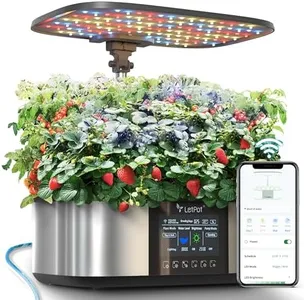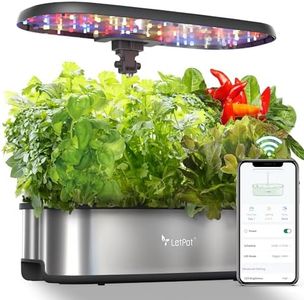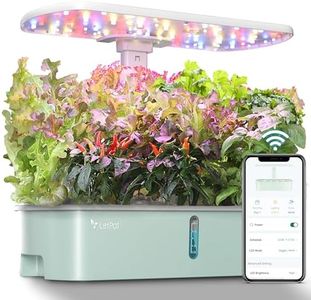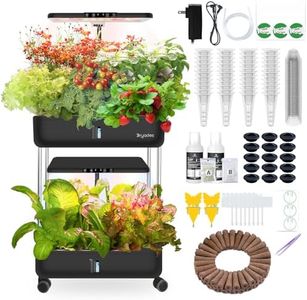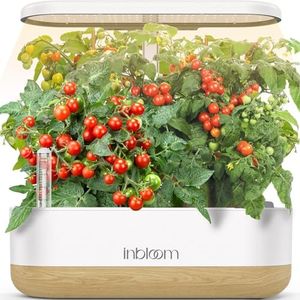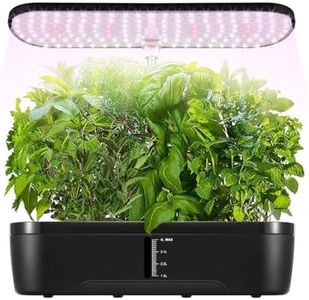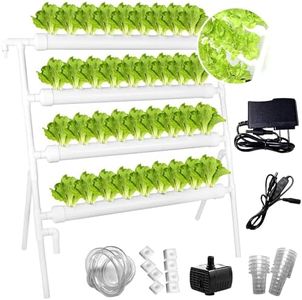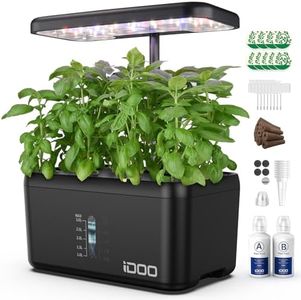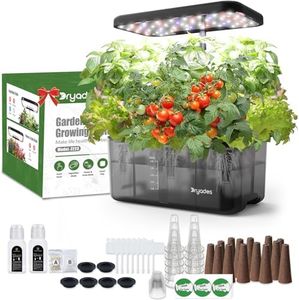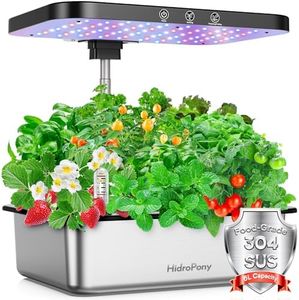We Use CookiesWe use cookies to enhance the security, performance,
functionality and for analytical and promotional activities. By continuing to browse this site you
are agreeing to our privacy policy
10 Best Indoor Hydroponic System
From leading brands and best sellers available on the web.Buying Guide for the Best Indoor Hydroponic System
Choosing the right indoor hydroponic system can transform your plant-growing experience, making gardening indoors easy, efficient, and productive. The perfect model for you depends largely on the types of plants you want to grow, the available space in your home, and the level of care you wish to dedicate. Every hydroponic system has its own unique features, so understanding the core specifications will help you match a system to your gardening goals and lifestyle.System TypeThe type of hydroponic system refers to the basic design of how water and nutrients are delivered to the plant roots. The main types include Deep Water Culture (DWC), Nutrient Film Technique (NFT), Ebb and Flow, Wick, and Drip systems. Some are fully automated while others are more hands-on. For beginners, simpler systems like DWC or Wick are easier to manage, while advanced users might prefer the control offered by NFT or Drip systems. Consider how much time and involvement you want, as well as the types of plants you aim to grow, since some systems suit leafy greens while others can handle fruiting plants better.
Plant CapacityThis specification tells you how many plants the system is designed to support at once. Small setups may only accommodate 4-6 plants, which is perfect for herbs or small greens in compact spaces. Medium systems typically handle 10-20 plants, providing a balanced option for most home gardeners. Large units can support 30 or more plants and are suitable if you want a continuous, varied harvest or grow larger crops. Consider your goals: for fresh herbs, small is fine; for regular salads or sharing produce, go larger.
Lighting Type and PowerIndoor hydroponic systems often come with built-in grow lights that replace natural sunlight. Lighting types range from simple LED strips to full-spectrum panels, and their power is usually measured in watts. Low-wattage lights (10-20W) work for herbs and microgreens; mid-range (30-60W) lights are suited for leafy vegetables; high-wattage (70W and up) lights are needed for fruiting plants or bigger yields. The right light depends on what you plan to grow—delicate greens need less intense lighting, while tomatoes or peppers need stronger, full-spectrum illumination.
Water Reservoir SizeThis tells you how much water the system can hold. Small reservoirs (1-2 liters) need frequent refilling but are compact, while larger reservoirs (5 liters or more) require less attention and support bigger plant groups. A larger reservoir is helpful if you want less daily maintenance or plan to be away for a few days, as it keeps your plants consistently watered and fed.
Control and AutomationMany hydroponic systems offer different levels of automation, ranging from manual timers to fully automatic systems that regulate lights, watering, and even nutrient dosing. Minimal automation means more hands-on work, which some find rewarding, while full automation is perfect if you want a ‘set and forget’ experience. Think about how much daily involvement you want and pick a system that matches your lifestyle—more automation often means less daily effort.
Build Size and ShapeThe physical size and design of the system affects where and how you can use it. Compact, vertical designs are great for small apartments or countertops. Larger, modular units can fit on the floor or in a dedicated room. Make sure to measure your available space and consider whether you want something decorative and visible or something more functional and out of the way.
Grow Medium CompatibilityHydroponic systems use different materials, like sponges, clay pellets, or Rockwool, instead of soil to anchor plant roots. Some systems are designed for a specific type, while others are flexible. If you have a preference or want to experiment, look for a system that matches or allows switching between different grow mediums. This impacts plant health and maintenance style.
